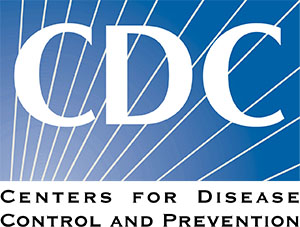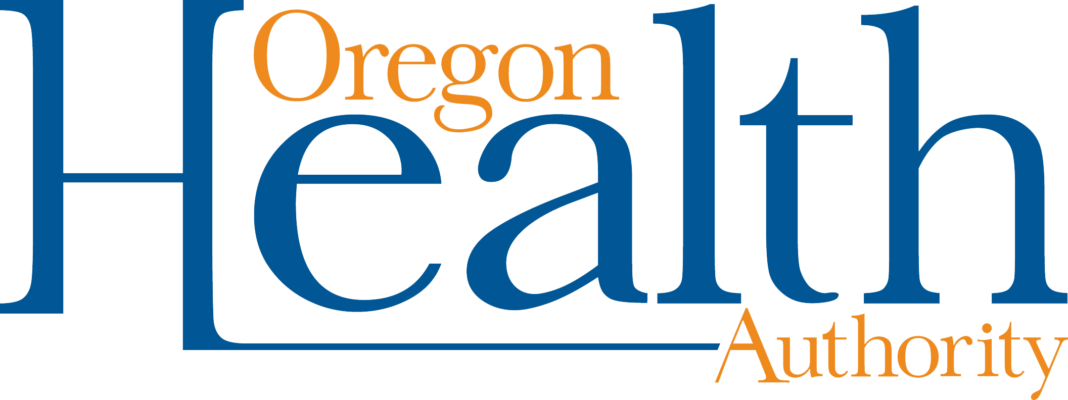As we work to make vaccines widely available, the fastest way to get our schools, businesses and communities back open is to keep working together. We’re going to have to continue to use the tried-and-true methods we know stop the spread of this disease: wear a face covering, limit group size, keep distance, wash hands and stay home when sick.

Safety
Learn about the different vaccines in development, which are safe and effective.

Prioritization
Oregon will use a phased distribution approach to ensure vaccination is done in a fair and equitable way.

Teamwork
Keep playing your part—your actions slow the spread of COVID-19.

Providers
Resources to support providers in COVID-19 vaccination efforts to achieve community immunity.
Learn more about providing vaccines in OregonVaccine Safety & Effectiveness
Vaccines undergo rigorous scientific testing to ensure their effectiveness and safety.
There are multiple COVID-19 vaccines in development. The federal Food and Drug Administration and the Western States Scientific Safety Review Workgroup have approved the Pfizer-BioNTech vaccine and are currently reviewing the Moderna vaccine. More may come later.
Vaccines are safe & effective
The Pfizer and Moderna vaccines are safe and effective. Both vaccines were found to be over 94 percent effective and neither reported serious safety issues. The vaccines were tested in large-scale research, which
included adults from all backgrounds.
Due to the global pandemic, both vaccines were tested on many more people than a typical vaccine trial: the Pfizer vaccine was tested in 43,000 people and the Moderna vaccine was tested in 30,000 people.

Vaccine Application
Vaccine makers submit an Investigational New Drug application to the U.S. Food and Drug Administration (FDA). The application describes the vaccine and how it is manufactured. Also included are
information about the vaccine's safety and ability to produce an immune response in laboratories as well as the proposed clinical protocol for studies in humans.

Safety Trials
FDA Phase 1 Clinical Trials
- Typical size
- 20-100 volunteers
- Focus
- Researchers continue to ask basic safety questions and identify whether the vaccine produces an immune response. They watch for serious side effects. If side effects are noticed, they look at whether the dose (amount or concentration) changes the side effects observed.
- Oversight
- Each clinical trial has a Data Safety Monitoring Board (DSMB). This group is made up of non-governmental and non-industry healthcare providers, vaccine experts, immunologists and statisticians. This group can pause, modify or stop a study if they are worried about safety or how well the vaccine is working FDA provides regulatory oversight.

Expanded Trials
FDA Phase 2 Clinical Trials
- Typical size
- Hundreds of volunteers
- Focus
- Researchers continue to ask whether the vaccine is safe and produces an immune response. They watch for serious side effects. In this phase researchers begin to determine whether the immune response is strong enough to create immunity by looking at antibody levels. The larger group size allows researchers to start comparing and contrasting how well the vaccine works in different groups, such as men and women, racial and ethnic groups, and people of different age groups.
- Oversight
- Each clinical trial has a Data Safety Monitoring Board (DSMB). This group is made up of non-governmental and non-industry healthcare providers, vaccine experts, immunologists and statisticians. This group can pause, modify or stop a study if they are worried about safety or how well the vaccine is working. FDA provides regulatory oversight.

Efficacy Trials
FDA Phase 3 Clinical Trials
- Typical size
- Hundreds to thousands of volunteers
- COVID Vaccine Trial
- Many of the COVID-19 vaccine trials are much larger than a typical phase 3 clinical trial, with some studies enrolling as many as 30,000 to 60,000 volunteers.
- Focus
- Scientists give the vaccine to thousands of people and wait to see how many become infected, compared with volunteers who received a placebo. These trials can determine if the vaccine protects against the coronavirus in large numbers of people. In June, the FDA advised vaccine makers that they would want to see evidence that vaccines can protect at least 50% of those who receive it. In addition, Phase 3 trials are large enough to reveal evidence of relatively rare side effects that might be missed in earlier studies.
- Oversight
- Each clinical trial has a Data Safety Monitoring Board (DSMB). This group is made up of non-governmental and non-industry healthcare providers, vaccine experts, immunologists and statisticians. This group can pause, modify or stop a study if they are worried about safety or how well the vaccine is working. FDA provides regulatory oversight.

Approval Process
If successful, the vaccine maker submits a license application to FDA that provides efficacy and safety information FDA makes a risk/benefit assessment and decides whether to recommend or oppose the
approval of a vaccine. Also, during this stage, the proposed manufacturing facility undergoes a pre-approval inspection during which production of the vaccine as it is in progress is examined in detail.
Following FDA's review of a license application, the vaccine maker and FDA may present their findings to the Vaccines and Related Biological Products Advisory Committee (VRBPAC). This committee is a group
of non governmental and non-industry scientists, physicians, statisticians, and a consumer representative that provides advice to the FDA regarding the safety and efficacy of the vaccine for the proposed
use.
Vaccine approval also requires that the product be labeled to allow health care providers to understand the vaccine's proper use, including its potential benefits and risks, to safely deliver the vaccine
to the public. The vaccine and the manufacturing processes are approved by FDA during a pandemic. A vaccine may receive an Emergency Use Authorization (EUA) before getting approval. Once a vaccine is
licensed, researchers continue to monitor people who receive it to make sure it Is safe and effective.

CDC Recommendation
Once FDA approves a vaccine, the U.S. Centers for Disease Control and Prevention provides guidance on whether and how products should be used by public health. CDC guidance is informed by an outside
advisory committee called the Advisory Committee on Immunization Practices (ACIP). ACIP independently reviews the vaccine safety and efficacy data, as well as epidemiologic data describing which groups
are most at risk and likely to benefit from vaccination.

Vaccine Adverse Event Reporting System (VAERS)
The government uses the Vaccine Adverse Event Reporting System to identify problems after a vaccine is given to the public. This system allows additional formal studies on a vaccine to continue once it is
on the market. Unlike other medications and devices, vaccines are closely monitored for safety and effectiveness after they become available to the public. VAERS is one of
multiple monitoring systems used to monitor vaccine safety.
During a pandemic, a vaccine may receive Emergency Use Authorization (EUA) before being approved through a standard application. The FDA Commissioner may authorize medical products or unapproved uses of approved
medical products to be used in a public health emergency to diagnose, treat or prevent serious or life-threatening diseases or conditions when there are no available alternatives, and when the benefits of using a
new medical product outweigh their risks.
For more information, visit the FDA website.
Governor Kate Brown announced that Oregon is joining other western states to review the safety and efficacy of COVID-19 vaccines
once approved by the FDA. The Scientific Safety Review Workgroup includes Oregon, Washington, California, Nevada and Colorado.
The Western States Scientific Safety Review Workgroup confirmed the Pfizer COVID-19 vaccine is safe and effective.
The panel includes experts appointed by all member states, and nationally recognized scientists with expertise in immunization and public health. This panel reviews all publicly available data concurrently with
federal reviews and will present a report as soon as possible after the FDA approves a vaccine. This will happen for all approved COVID-19 vaccines.
This is an added layer of independent expert review that will help build confidence in the vaccine and bring an additional layer of scrutiny to this important process. OHA is engaging with communities and groups
that are most affected by COVID- 19, and we have heard that Oregon communities have questions and concerns about the safety of the vaccine. We want to give our community the highest confidence in a COVID-19
vaccine. This panel is another step to do that.
Read on to learn how vaccination will be prioritized.
In the meantime,
here’s what we need to do together
Until we vaccinate enough Oregonians to stop the spread of
COVID-19, we are going to have to keep doing what we’re doing.
We are all going to have to continue to:

Wear our face covering when we are around people who don’t live in our home

Keep our gatherings small

Stay home when we are sick

Wash our hands often

Keep our distance from people we don’t live with
Accessibility: For individuals with disabilities or individuals who speak a language other than English, OHA can provide information in alternate formats such as translations, large print, or braille. Contact the Health Information Center at 1-971-673-2411, 711 TTY or COVID19.LanguageAccess@dhsoha.state.or.us
Printing requests: You can download materials on this page. OHA does not offer paper versions. Please feel free to print whatever you need.
Language access: OHA is working to provide original content in languages other than English. Many of the materials in our community resources section are available in multiple languages. OHA is also providing the Google™ Translate option to assist you in reading the OHA website in languages other than English. Google™ Translate cannot translate all types of documents and may not provide an exact translation. Anyone relying on information obtained from Google™ Translate does so at their own risk. OHA does not make any promises, assurances, or guarantees as to the accuracy of the translations provided.
General questions: COVID19.Vaccine@dhsoha.state.or.us
Website feedback: Health.Webmaster@dhsoha.state.or.us
